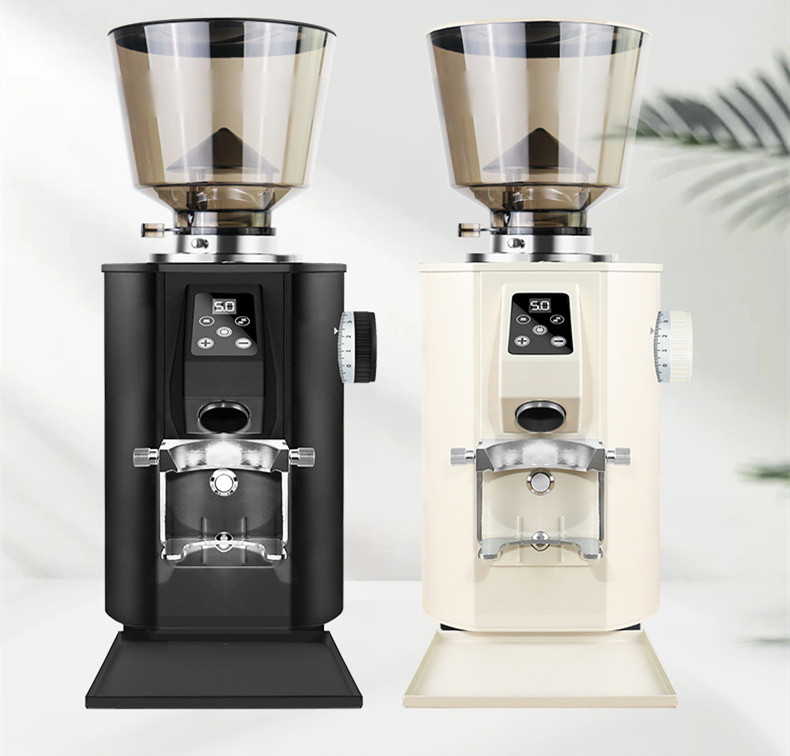Ultra-Fine Grinding for Turkish Coffee: Achieving the Perfect Powder-Like Consistency
Turkish coffee, renowned for its intense flavor and unfiltered richness, demands an extremely fine grind—so fine it resembles powdered sugar or flour. This texture allows the grounds to dissolve slowly during brewing, creating a thick, velvety mouthfeel and a robust profile. Here’s how to master the grinding process for this traditional Middle Eastern beverage.
Understanding the Grind Texture for Turkish Coffee
The grind for Turkish coffee must be finer than espresso, with particles small enough to suspend in water without settling quickly. This consistency ensures the coffee releases oils, sugars, and complex flavors during the short brewing time.
- Visual Comparison: The grind should resemble powdered cocoa or fine talcum powder, with no visible granules.
- Tactile Test: Rub a pinch between your fingers—it should feel smooth, not gritty.
- Brewing Impact: A coarse grind results in weak, watery coffee, while uneven particles lead to sediment settling at the bottom of the cup, disrupting the drink’s texture.
Selecting the Right Grinding Equipment
Not all grinders can achieve the ultra-fine texture required for Turkish coffee. The tool you choose must support precise adjustments and generate minimal heat to preserve flavor.
Burr Grinders vs. Blade Grinders
- Burr Grinders: These are ideal for Turkish coffee, as they crush beans uniformly between two abrasive surfaces. Opt for a model with micro-adjustments to dial in the ultra-fine setting.
- Blade Grinders: While cheaper, blade grinders chop beans unevenly, producing a mix of coarse and fine particles. If using one, pulse the beans in short bursts (5–10 seconds each) and sift out larger chunks with a fine-mesh sieve.
Manual vs. Electric Grinders
- Manual Grinders: Hand-cranked models offer control over grinding speed, reducing heat buildup. Look for one with conical ceramic burrs, which stay sharp longer and resist overheating.
- Electric Grinders: High-speed electric grinders can generate friction, potentially burning the beans. If using one, grind in 3–5 second intervals, pausing to let the machine cool.
Step-by-Step Grinding Process for Turkish Coffee
Achieving the perfect grind requires patience and attention to detail. Follow these steps to ensure consistency:
Step 1: Preparing the Beans
- Bean Selection: Use medium or dark roast beans with low acidity and high oil content, such as Brazilian or Ethiopian varieties. Light roasts may taste sour when ground ultra-fine.
- Freshness: Grind beans immediately before brewing to preserve volatile aromatic compounds. Stale beans produce a flat, dusty flavor.
- Quantity: Measure beans based on your brewing vessel (cezve or ibrik). Typically, 1 tablespoon of grounds per 3 ounces of water suffices.
Step 2: Setting the Grinder
- Burr Adjustment: If using a burr grinder, set it to the finest possible setting (often labeled “Turkish” or “extra fine”). Test the grind by brewing a small batch—if the coffee tastes weak, adjust finer.
- Blade Grinder Technique: Pulse the beans in 5-second intervals, shaking the grinder between pulses to redistribute grounds. Stop when the texture resembles flour.
Step 3: Sifting and Refining
- Sifting: Pass the grounds through a fine-mesh sieve (80–100 mesh) to remove larger particles. Re-grind any residue until it passes through.
- Consistency Check: Press a small amount of grounds between your fingers—they should clump slightly but not form hard pellets.
Avoiding Common Grinding Mistakes
Even experienced baristas encounter challenges when grinding for Turkish coffee. Here’s how to troubleshoot issues:
Overheating the Beans
- Cause: Prolonged grinding generates friction, which can scorch the beans, resulting in a burnt taste.
- Solution: Grind in short bursts, especially with electric grinders. Let the machine rest for 1–2 minutes between batches.
Inconsistent Particle Size
- Cause: Uneven burr alignment or uneven bean distribution leads to a mix of coarse and fine grounds.
- Solution: For burr grinders, recalibrate the burrs periodically. For blade grinders, shake the container vigorously between pulses.
Static Cling
- Cause: Ultra-fine grounds often stick to the grinder’s chamber or your hands due to static electricity.
- Solution: Lightly mist the beans with water before grinding (1–2 drops per tablespoon) to reduce static. Alternatively, tap the grinder’s sides to dislodge clinging grounds.
Pairing Grind Size with Brewing Techniques
The ultra-fine grind interacts uniquely with Turkish coffee’s brewing method, which involves simmering water and grounds in a cezve. Proper technique ensures the coffee’s signature foam (kaimaki) forms correctly.
Water-to-Coffee Ratio
- Ratio: Use 1 part coffee to 10–12 parts water (e.g., 1 tablespoon coffee for 3 ounces water). A finer grind requires less water to avoid over-extraction.
- Brewing Time: Heat the mixture over low heat until it froths but does not boil. Remove from heat immediately after the first froth rises to prevent bitterness.
Serving and Presentation
- Foam Preservation: Pour the coffee slowly into the cup, holding back the foam with a spoon until the last moment to create a creamy layer on top.
- Sugar Timing: If adding sugar, stir it into the cezve before brewing—the ultra-fine grind dissolves sugar evenly during simmering.
By prioritizing an ultra-fine grind, using the right equipment, and refining your technique, you can elevate Turkish coffee into a luxurious, aromatic experience. Experiment with grind adjustments and brewing times to tailor the flavor to your preference, ensuring every cup is as rich and velvety as tradition demands.


